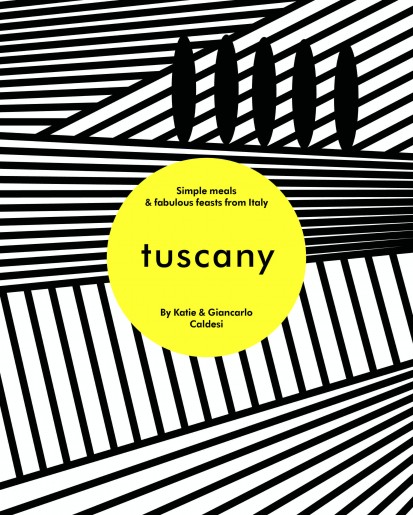A cheat's way to make quick Tuscan roast pork…
” That’s bloody marvellous, that roast pork” was the cry from from the Greek bishops who visited Florence in Tuscany in 1430. In fact what they said was “Aristos” in ancient Greek meaning “best or excellent” when presented with the famous Tuscan roast pork at a banquet held to unite the Greek Orthodox and Roman Catholic churches. And somehow the name “Arista” for roast pork with herbs was born and it is still called this today. Apparently like all old stories it may have been called that for years before the bishops arrived as there were already Greeks who lived and make perfume in Florence in the 1400’s, who knows?
Most of the recipes in our latest book on Italian regional food ‘Tuscany – Simple Meals and Fabulous Feasts’ are very much rooted in tradition but the recipe below is one of a handful of dishes that are modern day variations on classics. Arista is usually a pork loin on or off the bone but it can take hours in the oven so this is our son Flavio’s quick version using a herb mix that he calls his Tuscany “dust” and a pork tenderloin. He feels the mixture it is the essence of Tuscan flavours and uses his dust potatoes or chicken thighs before roasting and he even puts it into homemade beef burgers; it just makes everything taste a little better.
The quantities below make more rub than you need but it will keep in the cupboard for as long as other dried herbs. The rub can also be made with fennel seeds, which Giancarlo loves but Flavio doesn’t – the choice is yours! Serve the tenderloin with lentils.
Filetto di Maiale di Flavio alle erbe toscane
Pork tenderloin with Flavio’s Tuscan ‘dust’
Serves 4–6
2 teaspoons dried or fresh rosemary needles
1 teaspoon dried sage or 3 large fresh sage leaves
1 teaspoon fennel seeds, crushed (optional)
½ teaspoon fine sea salt
¼ teaspoon freshly ground black pepper
1 tablespoon chicken fat, beef dripping or extra-virgin olive oil
1 x 600 g (1 lb 5 oz) pork tenderloin
Preheat the oven to 180°C (350°F/Gas 4).
Start my making the dust: crush the dried herbs and seeds using a pestle and mortar or a spice grinder. If using fresh herbs, finely chop them together with the seeds (if using) on a board with a sharp knife. Put the mixture, the dust, into a small container.
Evenly sprinkle 1 tablespoon of dust’for the tenderloin over an A4 size piece of baking parchment with the salt and pepper. Trim away any tough silver skin from the tenderloin and roll it in the rub on the paper to coat it evenly. You can store it at this point in the fridge for a couple of hours or use it straight away.
Heat the chicken fat or oil in a large non-stick frying pan and, when hot, add the pork and brown it all over to seal in the juices, it will only take around 5 minutes to do this. Transfer to a roasting tin and cook in the oven for 12–15 minutes or until it is firm to the touch. Remove and set aside, covered in foil and a tea towel to rest for 10 minutes. Cut into roughly 1 cm (½ in)-thick slices and arrange on top of warm lentils, buttery mashed potatoes or soft polenta with any cooking juices poured over the top.
Adapted from ‘Tuscany – Simple Meals and Fabulous Feasts’ published by Hardie Grant with photography by Helen Cathcart. You can buy signed copies here.

